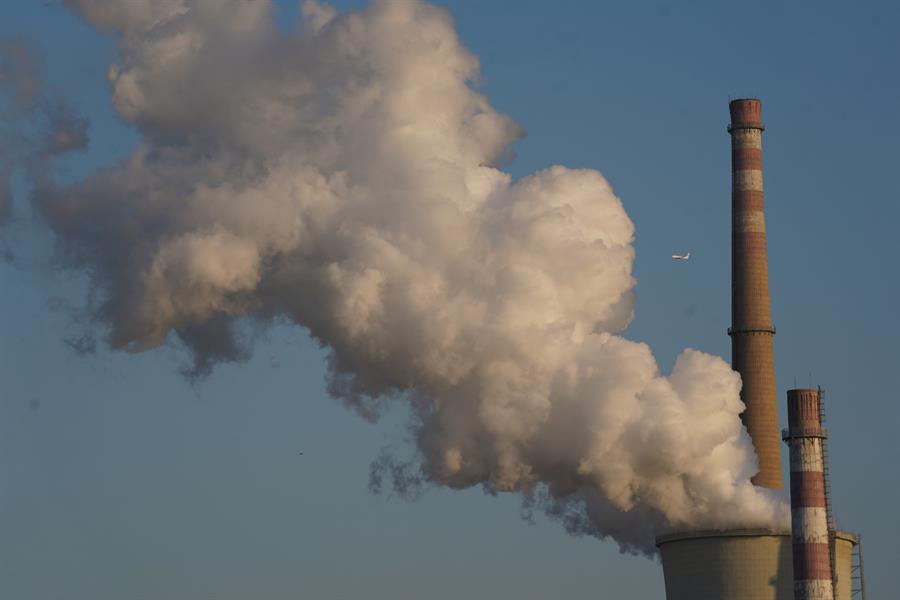Steam billows from cooling towers of a power plant operating for the city's power and heating in Beijing, China, 25 November 2015. EFE/EPA/WU HONG

Steam billows from cooling towers of a power plant operating for the city's power and heating in Beijing, China, 25 November 2015. EFE/EPA/WU HONG
Beijing, November 29 (efe-epa).- China heads to the United Nations Climate Summit, the COP25, being held in Madrid from Dec. 2-13, hoping to establish a new axis of power that will lead the fight against the climate crisis despite being one of the world’s most polluting countries.
“There is no solution to the global climate crisis without ambitious Chinese participation,” Li Shuo, a policy advisor on climate, biodiversity and oceans for Greenpeace Asia, tells EFE. “Over the past decade, China has transformed itself from a climate bad boy to a strong contributor to international climate action.”
China’s commitment to fighting climate change was displayed at a meeting earlier this month between President Xi Jinping and his French counterpart Emmanuel Macron, in which both leaders reaffirmed their commitment to the Paris Climate agreement of 2015, which the United States has said it will withdraw from.
Xi and Macron urged developed nations to invest an annual 100 billion dollars until 2025 to fight climate change.
The director of the China Institute of Public and Environmental Affairs, Ma Jun, pointed out that at COP15 in 2009, China was still pushing for the rights of developing nations to use energy sources such as coal, but since 2013 has drastically changed its stance.
Six years ago, “the people spoke up because they wanted to breathe clean air,” Ma tells EFE. “Carbon emissions had tripled in 11 years, and since 2013 they have remained at basically the same level.”
The “factory of the world” has paid a high price for sacrificing its environment for the sake of its development.
In Beijing, levels of harmful PM2.5 air particles have fallen from 89.5 micrograms per cubic meter to the current 42, but this remains above its official target of 25, and even more still than the World Health Organisation's standard of 10.
“Air quality has seen significant improvement in parts of China, but many cities are still years, if not a decade, away from bringing PM2.5 to reasonable level for human health,” Li adds. “We haven't even talked about our water pollution, soil pollution, and food safety. These issues are lagging far behind air pollution in terms of public and policy awareness”.
“The quality of the surface water has improved a lot, but groundwater is still badly polluted,” Ma warns.
China’s main challenge will be reducing its reliance on coal - the country is responsible for half of the world’s coal consumption.
“It is not an exaggeration to say coal is the source of all evil. Our addiction to the black rock is the cause of half of air pollution and undoubtedly the largest contributor of carbon emissions,” says Li.
The activist call for radical changes if climate targets are to be met: “Our power market needs to be reformed. Perverse subsidies need to be withdrawn. Public health needs to be brought to a higher level in decision making.”
These changes will take time. According to the forecasts by the International Energy Agency, by 2040 the weight of coal and renewables on energy production will have been reversed.
In 2017, 58 percent of the energy produced in China came from coal, and 35 percent from renewables; in 2040, coal will represent 32 percent, while clean energy will be 57.1 percent.
But Li has noticed a certain fatigue from authorities regarding their ambitious climate and emissions commitments. “This is largely a result of the poor economic prospects and geopolitical challenges.”
Meanwhile Ma points out that it is not just Chinese authorities who must try to reduce emissions, but foreign companies manufacturing their products in China, such as Nike or Apple, must also play their part.
“Our direction of travel offers us assurance that things are on the right path, but we urgently need to switch into high gear. That requires more ambitious targets, stronger punishment on polluters, and more stringent enforcement on the ground,” the Greenpeace activist says.
Li laments China’s progress in fighting the climate crisis as “two steps forward, one step back”.
“The good news is there is strong environmental awareness in the Chinese public and political elites. Our daunting pollution problems have awoken the country and that awareness will propel further improvements.”
“The bad news is we are still moving far too slow.” EFE





